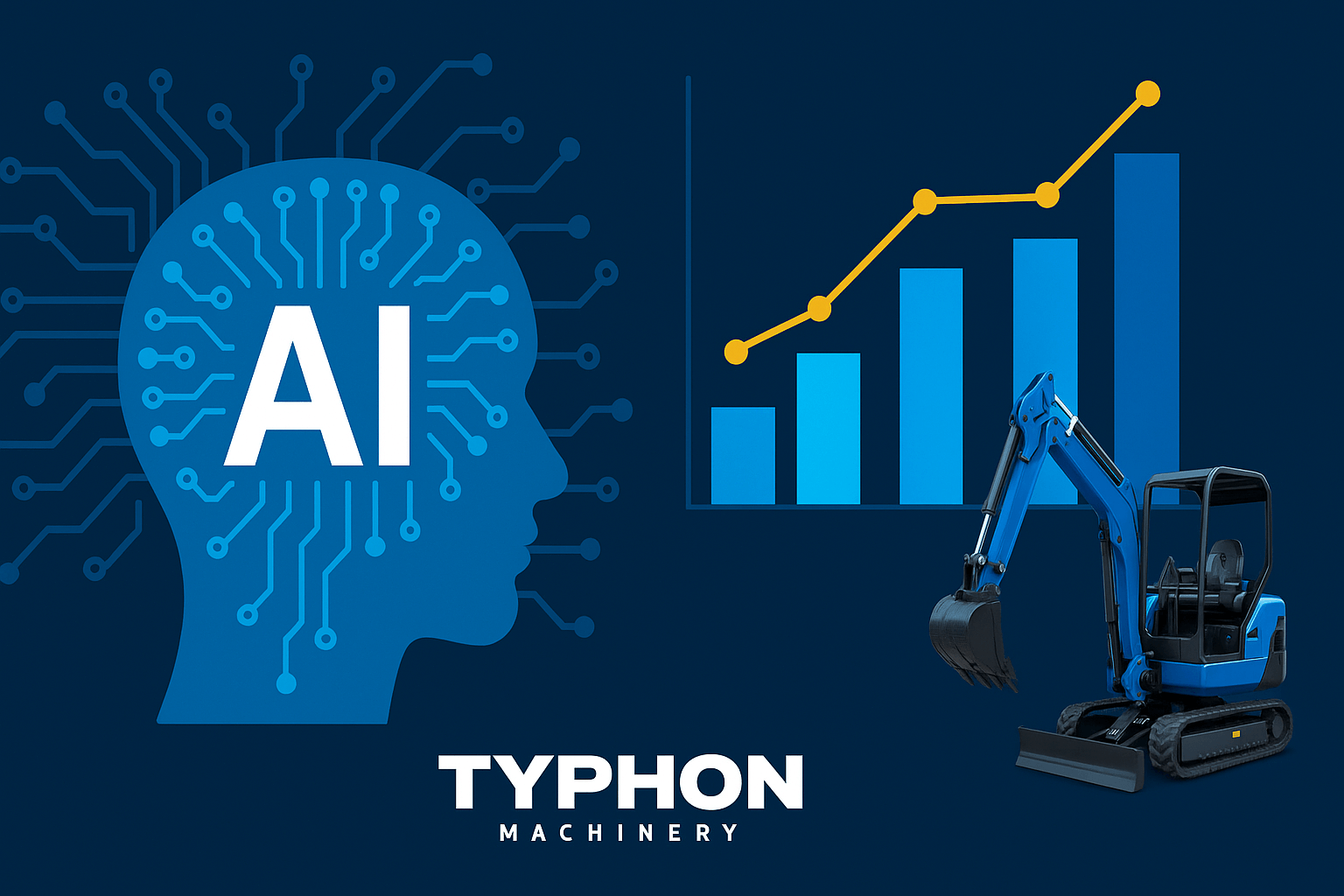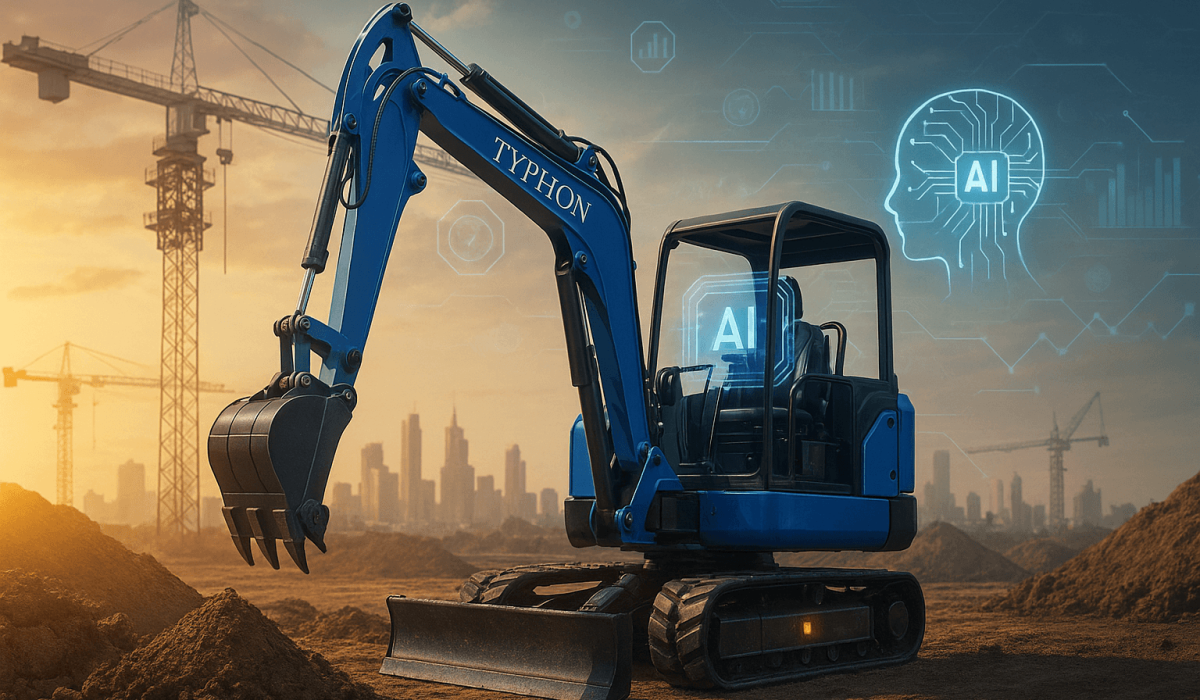The Next Inventive Generation of Mini Excavators
The loud noise of machines at work on a construction site is not new, but the symphony of the excavations of the future will be directed by a new generation of mini excavators.
These little monsters of power are no more limited to become intelligent, autonomous, and very efficient from just being properly equipped for digging. The huge transformation is possible because of the revolutionary integration of Artificial Intelligence (AI) and advanced automation technology.
In case you want a career in landscaping, utilities, construction, or specialized digging the knowledge of these huge changes is a must if you want to be competitive and successful in the next few decades.
At AmericanExcavator.org, our passion is to delve into the vanguard of the excavation technology, and what we see next is a world different from the one we are currently living in due to the innovation.
A Brief History of Mini Excavators: Mechanical Work to Smart Machines
Mini excavators have been the lifeblood of construction sites for many decades due to the inability of larger machines to reach certain locations. Their small size, their ability to move around, and their surprise power have made them the preferred ones for those who have to work in narrow spaces, urban projects, and delicate landscaping. Their journey of progress has been gradual:

- Early Designs: Simple hydraulic power and maneuverability were the main features of the mid-20th century models, which were quite archaic initially.
- Top-quality Hydraulic and Safe Design: The period from the late 20th century to the early 21st century marked the occurrence of a series of considerable developments in the potential of the hydraulic systems, which allowed for more accurate performance and resulted in higher power. Similarly, the modernization of cabs and controls brought the operators more comfort and safety with the ease to handle them.
- Fleet and Emission Regulation: The introduction of a variety of environmental regulations has forced the industry to find engineering solutions that will provide more fuel-efficient engines, as well as reduce pollution.
- Telematics and GPS Integration: The onset of telematics facilitated the remote monitoring of machine operation and position, while basic GPS systems were advanced so as to enhance digging accuracy.
On the other hand, although these steps towards technological progress are very important, they are very small when compared to the complete change being brought about due to AI and automation.
The Era of Intelligent Excavators: The AI-Based Revolution of Mini Trenchers
Machine learning is not just a fashion statement; it changes the hardware and software that are the geometry defining the mini excavator and are the main actors in each stage of the operation from planning and execution up to maintenance and safety standards prompting them to become digital actors.
Quality and Productivity Changed Autonomous Operation:
The businesses who are leading in the race of fully autonomous mini excavators are yet more in the Pilot stage and the progress is so fast. Such machines equipped with AI will comprehend the site drawing, cope with intricate terrains, and complete the process of digging in an accuracy that would be a future-unseen level. An example of this is a mini excavator that without a driver trenched for the utility lines, sticking faithfully to the supplied path, or through a programmed operation, was able to reach a landscape and stratigraphy with millimeter accuracy.
Smart Digging Algorithms:
The Artificial intelligent (AI) algorithms can use the collected data to determine the soil conditions and make decisions to change the digging angles, and move the bucket, to maximize the efficiency, and minimize the wear. This will lead to reduced cycle times, a lower amount of fuel being used, and a longer life of the equipment.
Predictive Maintenance:
AI algorithms compare the data from a mass of sensors placed on the mini excavator – engine functioning, hydraulic pressure, component temperatures – and consequently predict failures effectively prevent them from appearing. Based on the predictions maintenance can be accomplished proactively, thus not only will downtime be significantly reduced, but the avoidable repairs’ costs will also be cut. Such an approach definitely transforms the management of the fleet guaranteeing that all machines will be available for the full-time duty.
Optimized Task Planning:
The use of AI allows for multi-aspect analysis of the project blueprints and the site conditions in order to find not only the most efficient digging plans but also those that take the omnipresence of material, depth, and any kind of obstacle into account. With this technology, we are no longer at the stage of mere GPS guidance, it is indeed the artificial intelligence that is capable of making choices on our behalf most intelligently.
Enhanced Safety on the Job Site
The security of personnel on any excavation site is a major concern and AI is standing by to help control and manage it.
- Obstacle Detection and Avoidance: Thanks to a number of sensors equipped, including LiDAR, cameras, and other components, AI-based vehicles are able to perceive obstacles within their surrounding and thus to avoid the objects without having to undergo an unnecessary stop or restarting their course. Also, they can automatically cause the vehicles to stop if there is danger of collision by changing their course accordingly (these vehicles can be those of the workers, other vehicles, or utilities).
- Real-time Monitoring: The system of AI can watch over the operator’s level of tiredness and sound off the alarm and even drive the vehicle in important situations. In addition to this, it can be a major tool for ensuring the correct usage of the PPE and signaling of dangerous actions (practice of harmful practice).
- Automated Safety Protocols: AI technology and Geofencing is a method used for tracking machine’s faults, combined with AI, can prevent the entrance of any vehicle into restricted areas, on the other side, automation can lead to immediate shutdown during dangerous threats. Furthermore, there are the other methods of using heavy equipment such as punch code or a safety pen which is specially designed to a unique paper.
Addressing the Challenged Skilled Labor Marketplace
The construction industry is an example, which together with others, is dealing with a continuous, severe lack of skilled operators. AI and automation give the best possible solution:
- Operator Assist Systems: AI can be of great help to inexperienced and less skilled operators while training them on how to do difficult tasks, giving them feedback and guiding them in real time. Operators are thus more likely to be productive and confident.
- Rent to Operator: AI-assisted remote operation is based on providing almost fully automated control by the use of AI technologies with the operator far from the machine. Also, we have to take into consideration that the operator is in a hazardous situation. Those capabilities are possible because of the integration of some AI technologies like computer vision, which leads to the creation of robust and reliable Artificial Intelligent machines.
- Upskilling the Workforce: After manual tasks have been automated, skilled workers can dedicate their time to the supervisory and managerial level, carry out the role of problem-solver, and manage the AI-driven fleet. This increases the worker’s skill level and productivity.
Automation Beyond the Dig: The Integrated Job Site
The effect of AI and automation is not just a one-to-one replacement of a person with a machine. We are in a period characterized by intelligent, interconnected job sites.
BIM Integration: Construction companies can use software (BIM) integrated with Artificial Intelligence to program machines smoothly. The system’s basic design was fed by data collected from a BIM model which connects to an AI-powered operator for excavation thus the prototype was final created by the system. Real-time progress of the prototype was tracked by machines following the prearranged line of development.
Drone-Based Site Monitoring: The unmanned aircraft that is AI-driven has the agility and sky-gazing ability to record all aspects of the building. They (drones) use a combination of GPS and their cameras to get positional information, and thus remotely monitor and operate mini excavators without risking their personal safety.
Automated Material Handling: The future of the industry will take advantage of mini excavators operating together with autonomous trucks and similar material handling machines to form a highly efficient, integrated workflow.
The Next Generation of Mini Excavators: What to Expect
United States manufacturers are leading the pack in supplying the market with intelligent mini excavators ready to work. These mini excavators also make better business as they are the most advanced type of machines with great artificial intelligence. There will be a lot of changes and challenges in the near future, specifically the following:
- Hybrid and Electric Models: At present, many are already making the switch from solely gasoline to electric designs, but the future will deliver wider mini electric or hybrid excavator use, encouraged by new environmental regulations and the continuing silence and emission-free operation needed in cities and within indoor spaces. AI applications will regulate these new energy-efficient and environment-friendly electric and cater to the user’s needs when the user uses the machines.
- Advanced Telematics and Connectivity: The mini excavator users will remain ultra-connected via an array of on-board data logging and telematics tools. The volume of the data that machines will be accumulating for the purpose of analyzing it, predicting and detecting potential problems, will be sufficient to cater the needs remotely for the users also at the end get the best overall performance of the fleet.
- Modular and Customizable Designs: Better flexibility and modularity will enable easier application changes and personalization, making them more suitable for specific jobs. This trend will further expand the versatility of the machines.
- Enhanced Operator Interfaces: As high as the level of automation may reach, human control still holds its ground as indispensable. In the coming years, the new mini excavators are expected to come out with the advanced AI-operated graphical user interfaces, which are not only user-friendly, tech-savvy but also easy to handle the complex elements such as excavation and utility identification in real-time. In other words, the upcoming display of the enhanced reality is a visual representation of real-life situations.
Conclusion
The present time is the witness of a very different kind of digging that is not only intelligent and automation-enabled but also powered by a system that can change the established limits of such a small excavator. In the future, as AI technology remains the choice of automation and this technology continues to develop, more and more construction, landscaping and utility companies will find that their next generation of excavators will be the path of achieving their unprecedented figures of productivity, security, and profitability. It is not just staying in the here-and-now, but running a new round of construction era poker that is the real meaning of embracing these innovations.
FAQ’s:
Q1: What is the main benefit of AI in mini excavators?
A1: The primary advantages are the higher degree of accuracy, efficiency, and safety, thus quicker job execution, lower operational expenses, and fewer accidents in the working area.
Q2: Will AI and automation replace human operators entirely?
A2: Most likely no. Automation is going to take care of repetitive tasks, while human workers will be in charge of tasks that are still more of complex problem-solving, supervision of autonomous machines, or fleet management. AI will definitely use robots more effectively and improve their ability to do the same tasks as human operators can.
Q3: How will predictive maintenance benefit my business?
A3: AI-driven predictive maintenance helps before the breakdown. However, it is true that predictive maintenance enables fewer unexpected downtimes, lower repair costs, longer operational life, and more profit generated by the mini excavators owned by the business.
Q4: Are autonomous mini excavators available today?
A4: Though fully autonomous mini excavators for general commercial use are mostly under development and testing, there exist a lot of current models with AI-assisted operator systems, remote control, as well as advanced automation features which are the basis for future autonomy.
Q5: What role does AmericanExcavator.org play in this future?
A5: AmericanExcavator.org leads the change by acting as an information platform and guide on the use of the latest excavation technology, including visual communication about the whole process of understanding, adapting, and thriving with these new innovations in American-made mini excavators.





